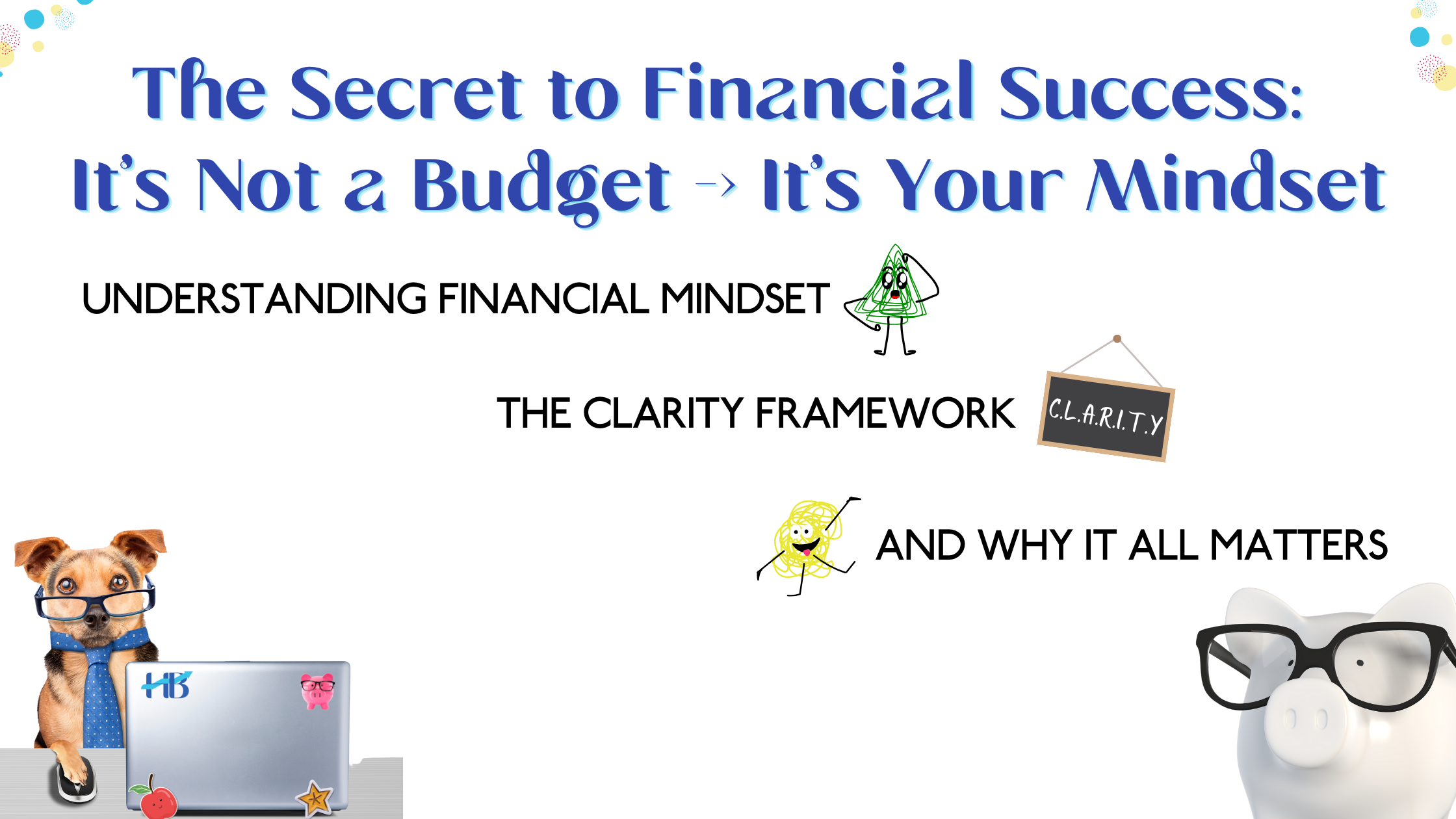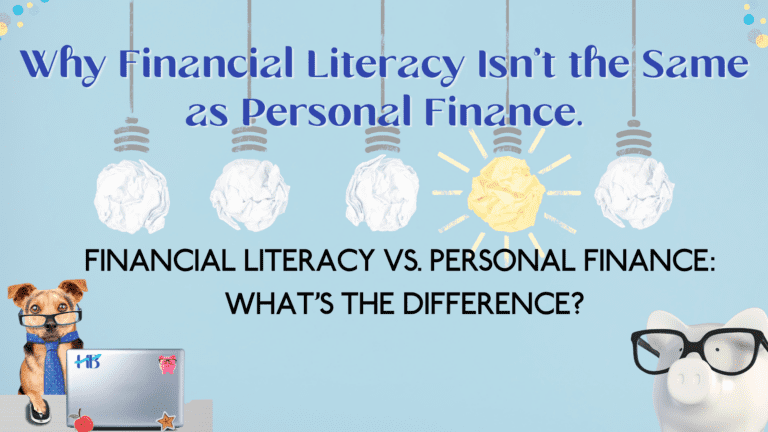The Secret to Financial Success: It’s Not a Budget -> It’s Your Mindset
Understanding Financial Mindset
Before we can change our financial situation, we have to understand the mindset that shapes our financial decisions. Financial literacy is not just about knowing numbers, it’s about how we think, feel, and act with money. Many of our beliefs about money were set in childhood, influenced by what we saw, heard, and were allowed to experience. If we don’t address these underlying thoughts, no financial plan will ever truly work because we will always fall back on old habits.
Money is not just math; it’s emotions, habits, and experiences. This is why so many people feel guilt, shame, or stress about their finances. But here’s the truth: no matter where you’re starting from, you can change the way you think about money. The goal is to replace avoidance, fear, and guilt with confidence, clarity, and control. That’s where the CLARITY framework comes in.
The CLARITY Framework
CLARITY is not just a method, it’s a mindset and a process for taking control of your financial decisions. Each letter represents a necessary step that must be fully embraced before moving on to the next. Most financial plans fail because they start with numbers instead of focusing on the foundation.
- The only money that truly matters is today’s money. You can reflect on the past and plan for the future, but the only thing you can work with is your current reality. Acknowledging where you are without shame is the first step. If you’re new to the idea of financial literacy and how it builds the foundation for personal finance, Learn the Difference Between Financial Literacy and Personal Finance to get clear on the difference.
- L is for Logical – Logic and honesty go hand in hand. You have to be brutally honest with yourself about what your life really looks like, not what you wish it looked like. Idealized thinking leads to unrealistic plans and failure. Being logical means accepting the truth and working with it.
- A is for Action – Knowing is not enough; you have to do something with it. This is the hardest part because action means stepping into discomfort. Growth is uncomfortable, but it’s the only way forward. Action is what turns clarity into progress.
- R is for Reality – This is where we start engaging with numbers. Now that we have the right mindset, we can look at income, expenses, and financial obligations with fresh eyes. Reality is not about judgment; it’s about taking control of what is real.
- I is for Intentional – Once we understand our reality, we assign every dollar a job with intention. This is where financial control becomes empowering because we choose how to use our money in ways that align with our goals and values.
- T is for Tuning – Life happens, and flexibility is key. Financial success isn’t about a perfect plan, it’s about adjusting when needed while staying committed to the process. Adapting is part of control, not failure.
- Y is for You – At the end of the day, this is about you. No one else’s spending plan, goals, or habits matter. Financial control is deeply personal, and success is about what works for you—not what anyone else says is “right.”
Why This Matters
Most people think financial control starts with spreadsheets and budgets, but it doesn’t. It starts with mindset and clarity. The numbers only work when we’ve done the internal work first. This process takes time, but it is the only way to create a system that lasts. When you start with your mindset, move through the CLARITY framework step by step, and refuse to rush into numbers before you’re ready, you set yourself up for lasting financial control—without guilt, shame, or stress.
If you’re ready to take the next step and put these principles into action, I’d love to help. Whether you’re looking for hands-on guidance, workshops, or personalized support, you can explore all my financial literacy workshops and programs on my Work With Me page.






